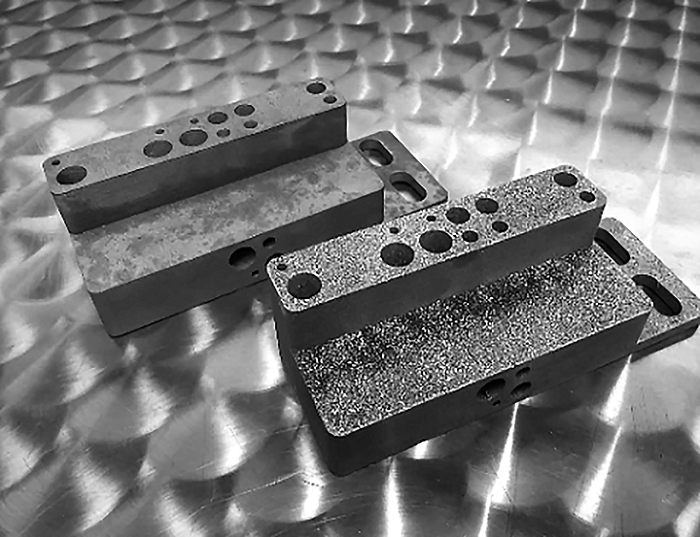ISO 16048 Evaluation of Surface Cleaning and Passivation
The ISO 16048 standard is a critical benchmark for evaluating the effectiveness of surface cleaning and passivation processes in additive manufacturing (AM) and 3D printing. This service focuses on ensuring that surfaces are free from contaminants, which can significantly impact the performance and longevity of AM parts. Surface contamination can lead to reduced mechanical strength, increased wear rates, or even corrosion initiation. The primary goal is to achieve a clean surface that promotes better adhesion and enhances the overall quality of the final product.
The process involves several key steps: specimen preparation, cleaning, passivation treatment, and subsequent inspection. Specimens are typically prepared by slicing AM parts into thin sections using advanced techniques such as focused ion beam (FIB) or laser cutting. The cleaned specimens undergo rigorous testing to ensure they meet the specified cleanliness levels as outlined in ISO 16048.
The cleaning process itself can vary depending on the materials used, but it often involves ultrasonic cleaning, chemical etching, or plasma treatment. Once cleaned, the surfaces are passivated using a variety of methods, including nitric acid treatment, deposition of chromium oxide, or application of a thin film coating. The success of these processes is then assessed through advanced microscopy techniques like scanning electron microscopy (SEM) and energy-dispersive X-ray spectroscopy (EDX).
The standard also emphasizes the importance of controlled environments during the testing process to avoid re-contamination. This includes using cleanroom facilities with strict air filtration systems and personnel dressed in appropriate protective gear. The results are reported according to ISO 16048 criteria, which include quantitative measurements such as surface roughness and depth of contamination.
The significance of this service extends beyond mere quality assurance; it plays a crucial role in meeting regulatory requirements for industries like aerospace, automotive, and medical devices. By ensuring that surfaces meet the stringent cleanliness standards set by ISO 16048, manufacturers can enhance product reliability and safety while also reducing costs associated with rework or early failures.
Understanding the environmental impact of surface treatments is another important aspect of this service. Many passivation processes use chemicals that could be harmful to the environment if not managed properly. Our facility adheres strictly to environmentally responsible practices, minimizing waste and ensuring compliance with international standards such as ISO 14001.
In summary, the ISO 16048 evaluation of surface cleaning and passivation is a vital service for any organization involved in additive manufacturing or 3D printing. It ensures that surfaces are free from contaminants, which can significantly enhance product performance and reliability. This service not only meets stringent industry standards but also contributes to environmental sustainability.
Scope and Methodology
The scope of this service is to evaluate the effectiveness of surface cleaning and passivation processes in additive manufacturing (AM) parts according to ISO 16048. The methodology involves several key steps:
- Specimen Preparation: Specimens are prepared by slicing AM parts into thin sections using advanced techniques such as focused ion beam (FIB) or laser cutting.
- Cleaning Process: The cleaning process can vary depending on the materials used, but it often involves ultrasonic cleaning, chemical etching, or plasma treatment. The objective is to remove all surface contaminants.
- Passivation Treatment: Once cleaned, the surfaces are passivated using a variety of methods, including nitric acid treatment, deposition of chromium oxide, or application of a thin film coating. This step aims to enhance corrosion resistance and improve adhesion properties.
- Inspection: The success of these processes is then assessed through advanced microscopy techniques like scanning electron microscopy (SEM) and energy-dispersive X-ray spectroscopy (EDX). These methods provide quantitative measurements such as surface roughness and depth of contamination.
Environmental and Sustainability Contributions
The ISO 16048 evaluation service not only ensures high-quality products but also contributes positively to environmental sustainability. Many passivation processes use chemicals that could be harmful if not managed properly, so our facility adheres strictly to environmentally responsible practices.
We minimize waste by recycling unused chemicals and reusing cleanroom air filtration systems. This approach reduces the overall environmental footprint of our operations while ensuring compliance with international standards such as ISO 14001. By adopting these sustainable practices, we help clients meet their own environmental goals and enhance their reputation in the marketplace.
The focus on reducing waste and minimizing harm to the environment extends beyond just chemical management. Our facility also implements energy-efficient practices, using LED lighting and motion sensors to reduce electricity consumption. Additionally, we actively participate in recycling programs for non-hazardous materials generated during testing processes.
Use Cases and Application Examples
- Aerospace Industry: Ensuring that AM parts used in aircraft engines are free from contaminants is crucial for maintaining engine performance and safety. The ISO 16048 evaluation helps aerospace manufacturers meet the stringent cleanliness standards required by aviation authorities.
- Automotive Sector: In the automotive industry, clean and passivated surfaces on parts like exhaust systems or engine components can improve fuel efficiency and reduce emissions. This service ensures that AM parts comply with the strict environmental regulations imposed by global markets.
- Medical Devices: For medical devices, the ISO 16048 evaluation guarantees that surfaces are free from contaminants that could lead to adverse effects on patients. This service is essential for ensuring compliance with FDA and EU regulations in the medical device industry.
- Consumer Electronics: Clean and passivated surfaces on AM components used in consumer electronics enhance durability and performance, leading to longer product lifecycles and better user experiences.





